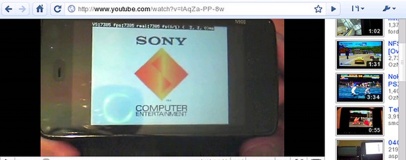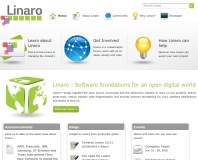Nokia's flagship smartphone, the N900, just got another exclusive in the mobile marketplace: a port of the open-source Chromium web browser, based on Google's Chrome project.
As reported over on Engadget, the move is an unofficial port of the Chromium sourcecode to run on the Maemo Linux platform that forms the core of Nokia's top-end N900 smartphone.
Based around the Chromium package originally developed for the Debian Linux distribution, the port is described as "a little buggy," but for those willing to put up with a few niggles it offers some features that are likely to come as a welcome surprise to those used to the traditional cut-down web browsers found in smartphones.
Perhaps the most impressive - and one that iPhone and iPad owners will be green with jealousy over - is support for Flash content, including full video playback. While it's not quite up to HD content, it does run standard definition video from sites like YouTube acceptably.
Another score for the Chromium port is that it passes the Acid3 test with flying colours, scoring a full 100 and managing to produce a final result exactly matching the reference rendering.
For N900 owners who want to try the Chromium port for themselves, full instructions for the manual installation can be found over on the Maemo Arena website.
Do you think that Chromium could be the next big mobile browser, or is the idea of running a desktop browser on a portable device a no-go from a user interface perspective? Share your thoughts over in the forums.
As reported over on Engadget, the move is an unofficial port of the Chromium sourcecode to run on the Maemo Linux platform that forms the core of Nokia's top-end N900 smartphone.
Based around the Chromium package originally developed for the Debian Linux distribution, the port is described as "a little buggy," but for those willing to put up with a few niggles it offers some features that are likely to come as a welcome surprise to those used to the traditional cut-down web browsers found in smartphones.
Perhaps the most impressive - and one that iPhone and iPad owners will be green with jealousy over - is support for Flash content, including full video playback. While it's not quite up to HD content, it does run standard definition video from sites like YouTube acceptably.
Another score for the Chromium port is that it passes the Acid3 test with flying colours, scoring a full 100 and managing to produce a final result exactly matching the reference rendering.
For N900 owners who want to try the Chromium port for themselves, full instructions for the manual installation can be found over on the Maemo Arena website.
Do you think that Chromium could be the next big mobile browser, or is the idea of running a desktop browser on a portable device a no-go from a user interface perspective? Share your thoughts over in the forums.

MSI MPG Velox 100R Chassis Review
October 14 2021 | 15:04









Want to comment? Please log in.